12 Bugs That Look Like Cockroaches (But Arent)
Cockroaches often get a bad rap, but there’s more to these insects than their reputation as pests would suggest. One common misconception is that they’re simply bugs or other types of insects that are easily mistaken for roaches. The truth is, some people might still be unclear about the entomological classification of cockroaches. Are they truly bugs? What kind of insects are they? Should we categorize them as pests at all?
The answer lies in understanding that there are certain bugs and insects that can appear to resemble cockroaches but aren’t actually related to them. To shed light on this, let’s take a closer look at some examples of insects that might be mistaken for roaches but are actually distinct species.
In this article, we’ll explore these similarities and differences, examining cases where crickets seem like cockroaches, beetles appear to be the same, and even the June bug or palmetto bug might be confused with a cockroach. We’ll also delve into comparisons between cockroaches and other insects like termites, ground beetles, baby roaches, bed bugs, water bugs, Asian longhorned beetles, Palo Verde Beetles, and wood-boring beetles.
Cricket vs. cockroach
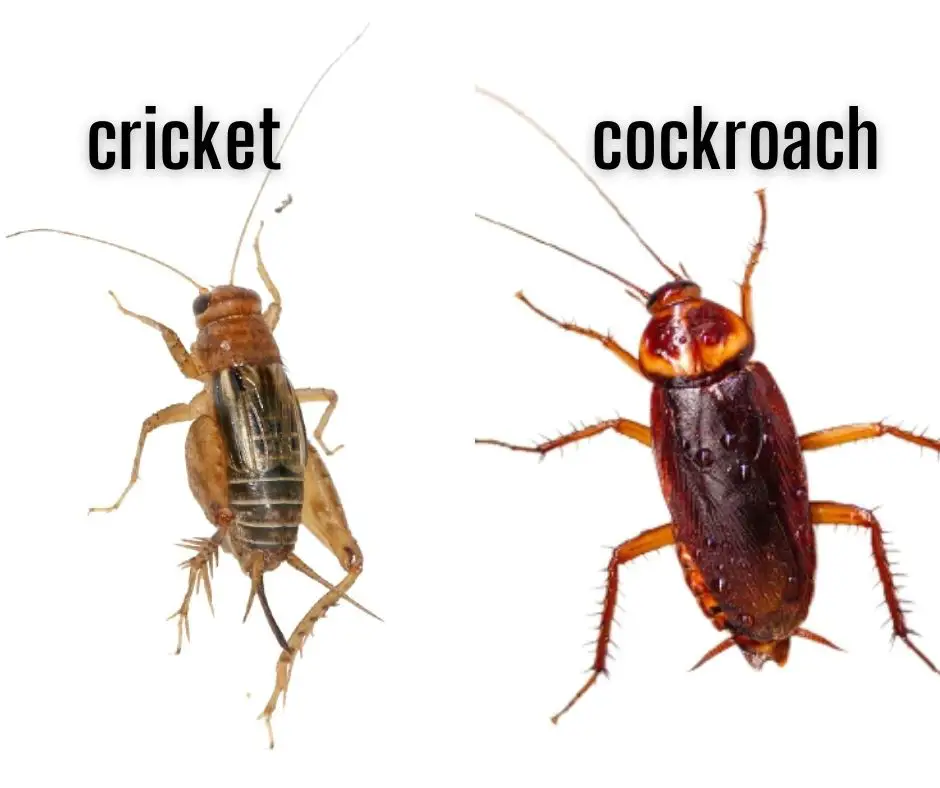
While it’s easy to confuse crickets with cockroaches, there’s little basis for this misconception. One possible reason is their similar brown to black coloration. However, a closer examination reveals significant physical differences. Crickets have elongated or cylindrical bodies in contrast to the oval-shaped ones found on roaches. Additionally, crickets possess longer antennae than their roach counterparts.
Another distinguishing feature of crickets are their long rear legs, which produce their distinctive chirping sound when vibrated. Both species exhibit a startle response by jumping when disturbed, although crickets are capable of higher jumps than roaches. In contrast, roaches tend to be more agile and prefer to run or glide rather than jump.
Interestingly, both crickets and beetles show a preference for outdoor environments, making it unlikely that they would become a nuisance through infestation.
Beetle vs. cockroach
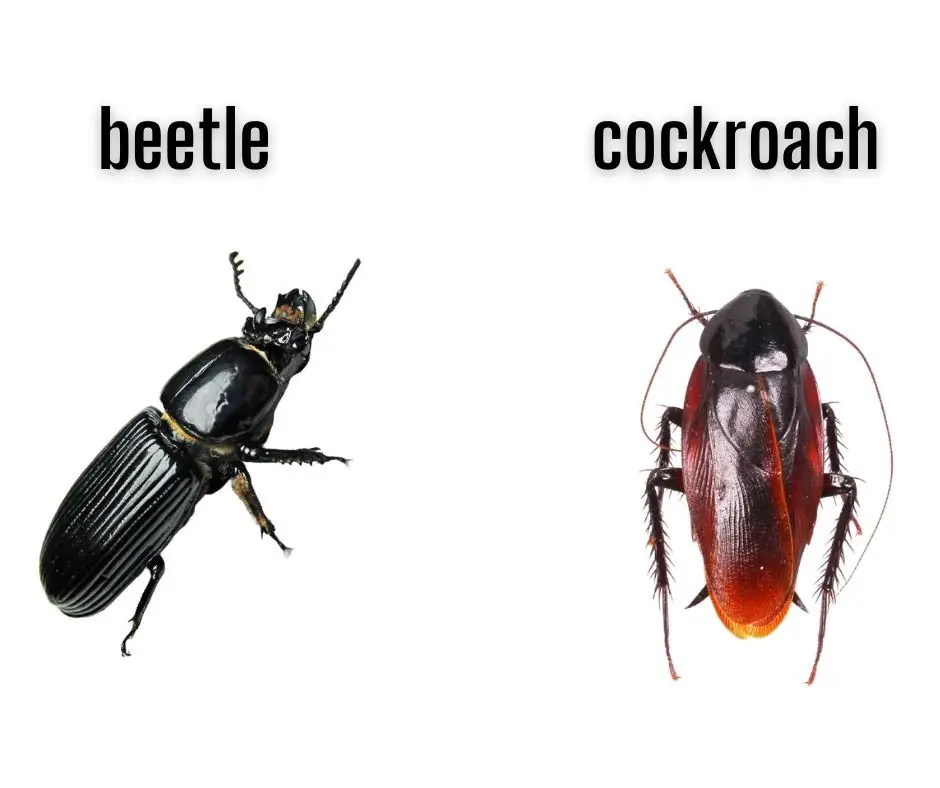
While beetles may bear a striking resemblance to cockroaches, they exhibit distinct differences that set them apart. One of the most notable distinctions is the length of their antennae and legs, with roaches typically sporting longer appendages. Furthermore, the two insects diverge when it comes to wing structure: roach wings are visible even at rest, although many species are flightless, whereas beetles can fold their wings and conceal them within their wing cases.
Interestingly, some beetle species share a closer affinity with roaches than others. For instance, ground beetles, May beetles, and wood-boring beetles display similarities in appearance and size to cockroaches.
Cockroach vs. Palmetto bug
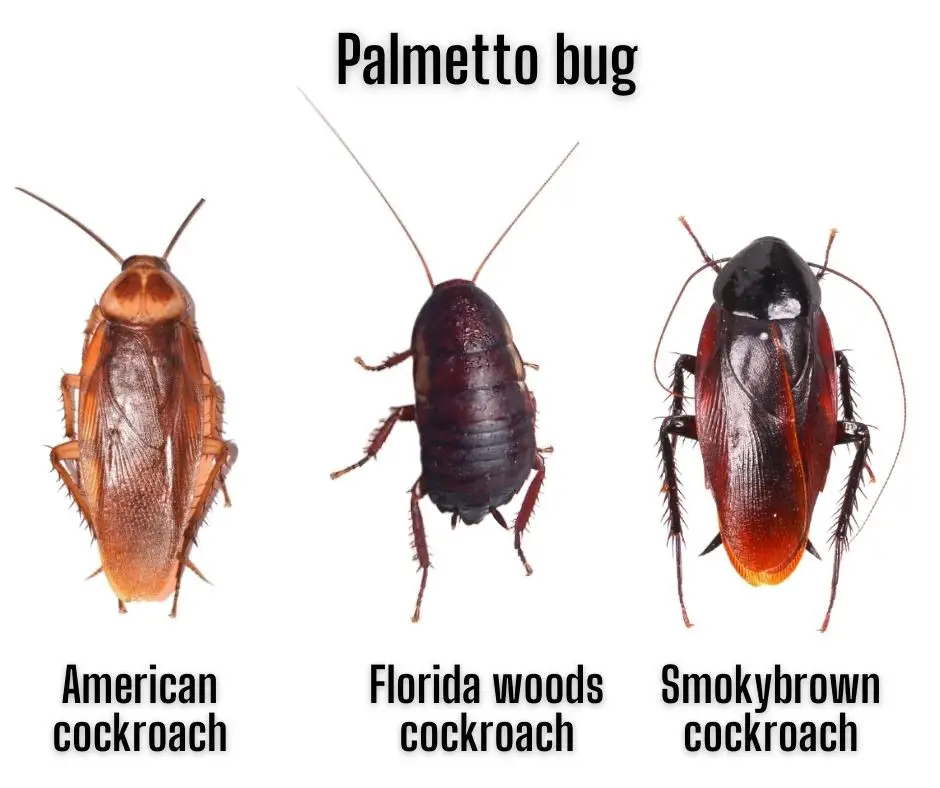
While it may seem like a trip down memory lane to learn that palmetto bugs and cockroaches share the same identity, it’s essential to understand their connection. In Florida, these pests are often referred to as palmetto bugs due to their penchant for hiding beneath palmetto leaves. Interestingly, several species of roaches, including American roaches, Florida roaches, and smoky brown roaches, are collectively known as palmetto bugs due to their visually similar appearances.
One distinct characteristic that sets these roaches apart is their pale brown to dark brown coloring, along with yellow markings on the thorax and wings designed for gliding rather than flying. This shared identity highlights the importance of understanding the different types of roaches found in Florida, which can help homeowners take a more informed approach to pest control.
June bug (May beelte) vs. cockroach
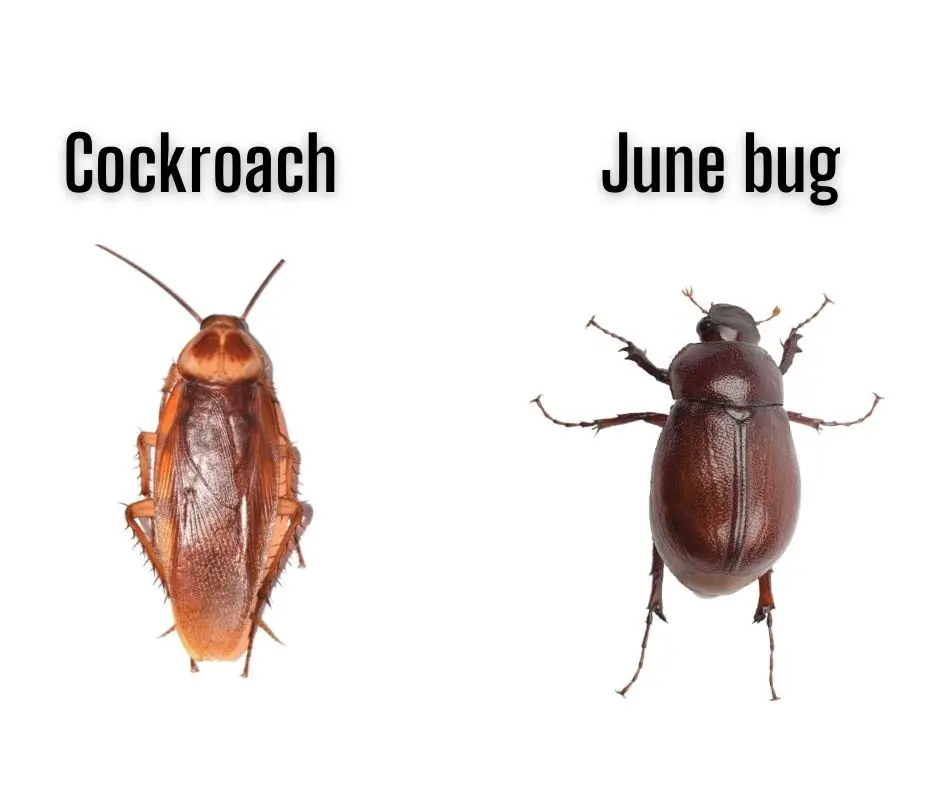
June bugs, also known as May beetles, bear a striking resemblance to roaches due to their dark reddish-brown coloration. However, this similarity is merely superficial, as these insects exhibit distinct physical and behavioral traits. Notably, June bugs are more rounded in shape compared to roaches, with curled antennae resembling eyelashes. Their dietary habits also diverge significantly, as they are 100% herbivores, feeding on leaves and other vegetation that grows primarily on trees.
Unlike roaches, which can be agile and rapid runners, June bugs are known for their clumsiness in flight, often crashing into walls or falling to the floor. Furthermore, while some roach species may be attracted to light sources, June bugs exhibit a stronger affinity for illumination.
Cockroach vs. termite
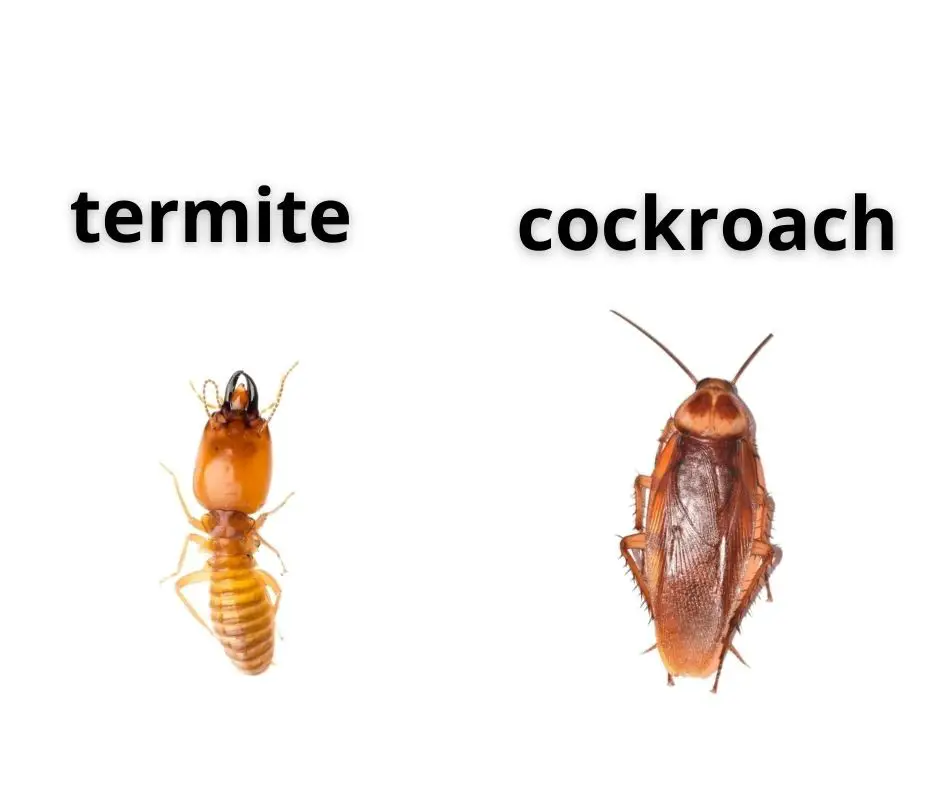
While cockroaches and termites may appear distinct at first glance, they share a surprising connection. In fact, recent scientific findings suggest that termites are, from an entomological perspective, a type of cockroach. Despite their physical differences – including softer bodies, shorter antennae, and a length of approximately 0.5 inches – the two insects exhibit similar characteristics.
For instance, both have distinct white varieties, although roaches only display this trait during their molting stage. Furthermore, while termites thrive in social colonies, often building complex structures within walls and roofs, feasting on wood and paper, cockroaches tend to be more solitary, adapting to environments near water sources and stable food supplies – a flexible approach that allows them to thrive in diverse settings.
Ground beetle vs cockroach
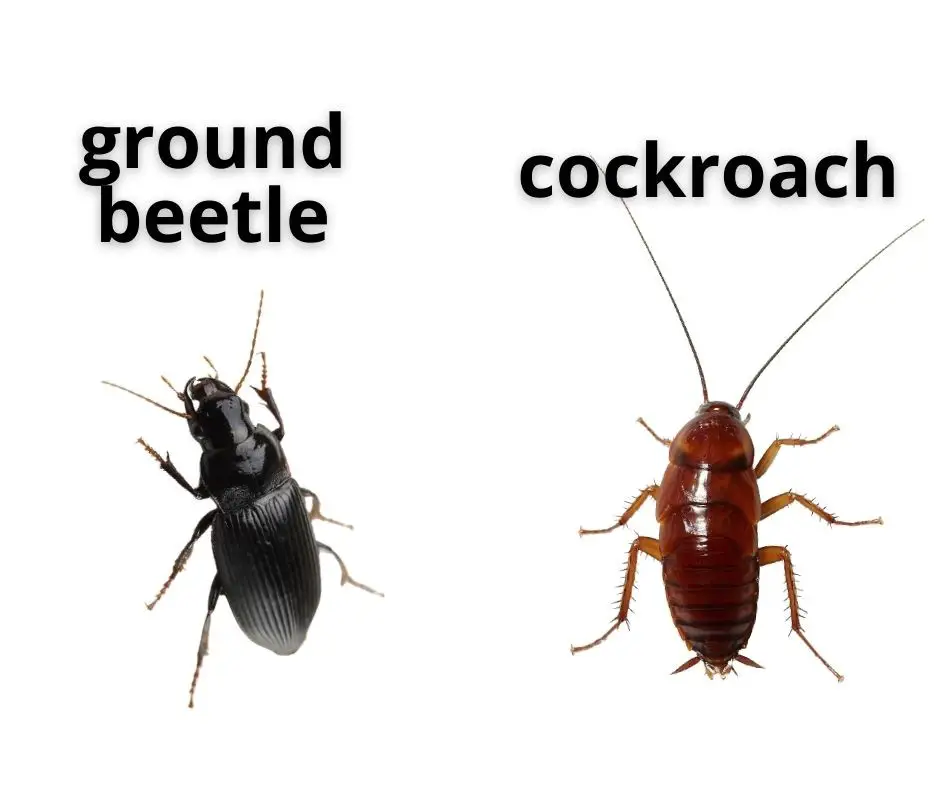
While it may seem like ground beetles and roaches share some superficial similarities, they actually diverge significantly when you look closer. For instance, despite having roughly 2,000 recognized species, ground beetles are distinguished from roaches by their robust, oval-shaped bodies with a shared red-brown hue. One notable difference lies in the wings – not all roaches possess them, and those that do typically have soft, membranous appendages.
In contrast, ground beetles boast sturdy front wings that set them apart. The two insects also exhibit distinct dietary preferences: ground beetles are herbivores and create burrows outdoors, making them unlikely to infest homes. This is in stark contrast to roaches, which can thrive indoors and often feed on a wide range of organic matter.
Baby cockroach vs. bed bug
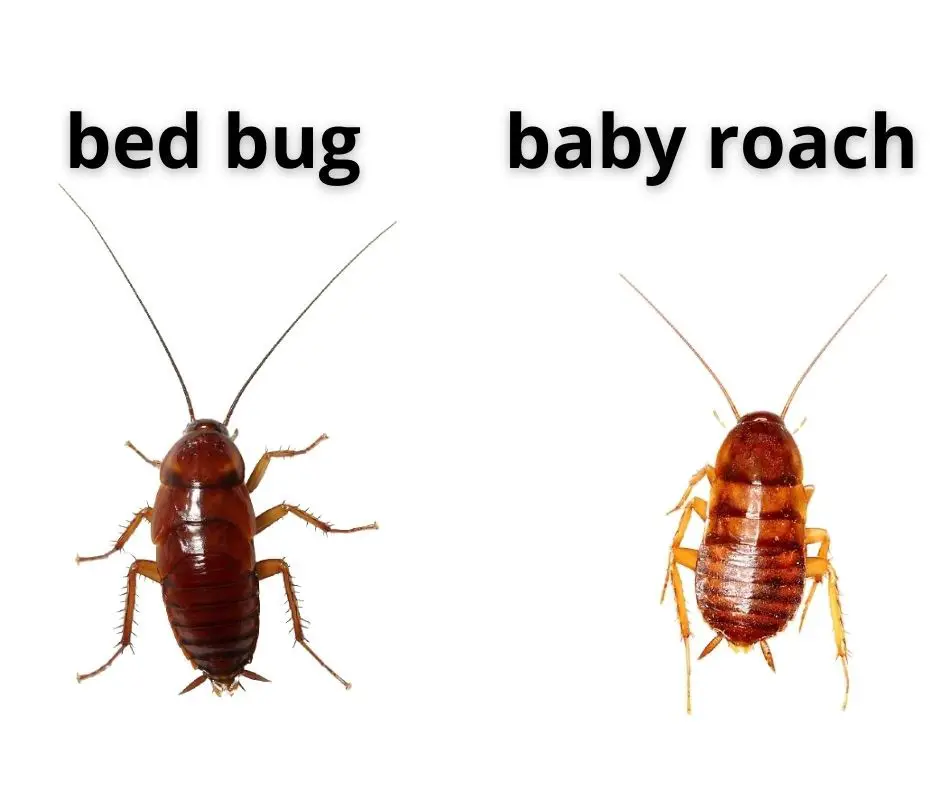
Roach nymphs often mistakenly resemble bed bugs, but they share some physical characteristics with German cockroach nymphs instead. Both have a pale to dark brown coloration, lack wings, and similar lengths of about 0.25 inches. However, while roach nymphs have a slender body shape and longer antennae, German cockroach nymphs have a more rounded body and shorter antennae. The similarity in appearance to bed bugs is due to the oval-shaped bodies and reddish-brown coloration of both species.
Cockroach vs water bug
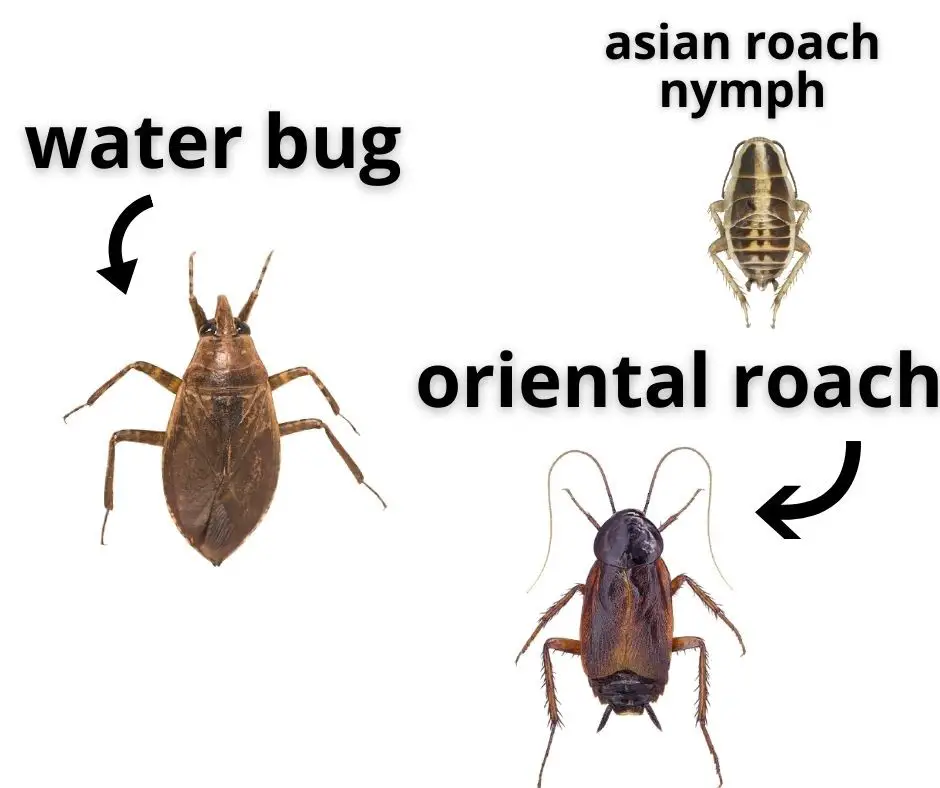
Contrary to popular opinion, roaches are not the same as water bugs. Specifically, small oriental and smoky brown roaches are often mistakenly referred to as water bugs. However, real water bugs inhabit stagnant waters, whereas roaches can survive out of water for short periods but cannot stay submerged indefinitely. Furthermore, while adult roaches can hold their breath underwater for 40 seconds, they lack the adaptations necessary to thrive in aquatic environments.
Water bugs, on the other hand, are characterized by their impressive size – up to 4 inches in length – whereas the largest roach reaches only 3 inches. Moreover, water bugs are known for their biting behavior, thanks to pincers on their front legs and strong beaks designed for predation. In contrast, roaches rarely bite and lack antennae altogether.
Additionally, while roaches are opportunistic feeders consuming whatever is available, water bugs are specialized predators that primarily feed on aquatic organisms.
Cockroach vs Asian Longhorned Beetle
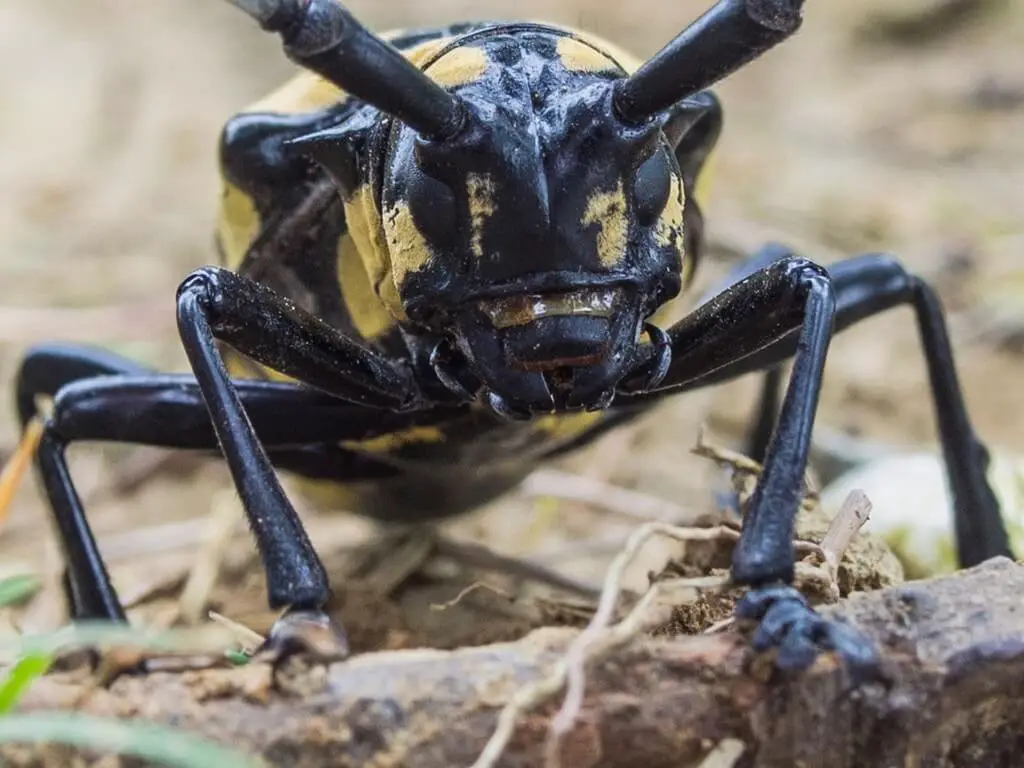
While it’s tempting to draw parallels between the two, a closer examination reveals significant differences. On the surface, Asian longhorned beetles stand out due to their striking features: a glossy black exoskeleton, elongated antennae, and distinctive white spots scattered along their bodies.
However, if one were to stretch the analogy, it’s possible to draw some superficial similarities with roaches in terms of their overall body shape, which is long and oval-like, and their approximate size, ranging from an inch to three inches. Nevertheless, these differences far outweigh any superficial similarities, making Asian longhorned beetles a distinct entity that can be easily distinguished from roaches.
Cockroach vs Palo Verde Beetle
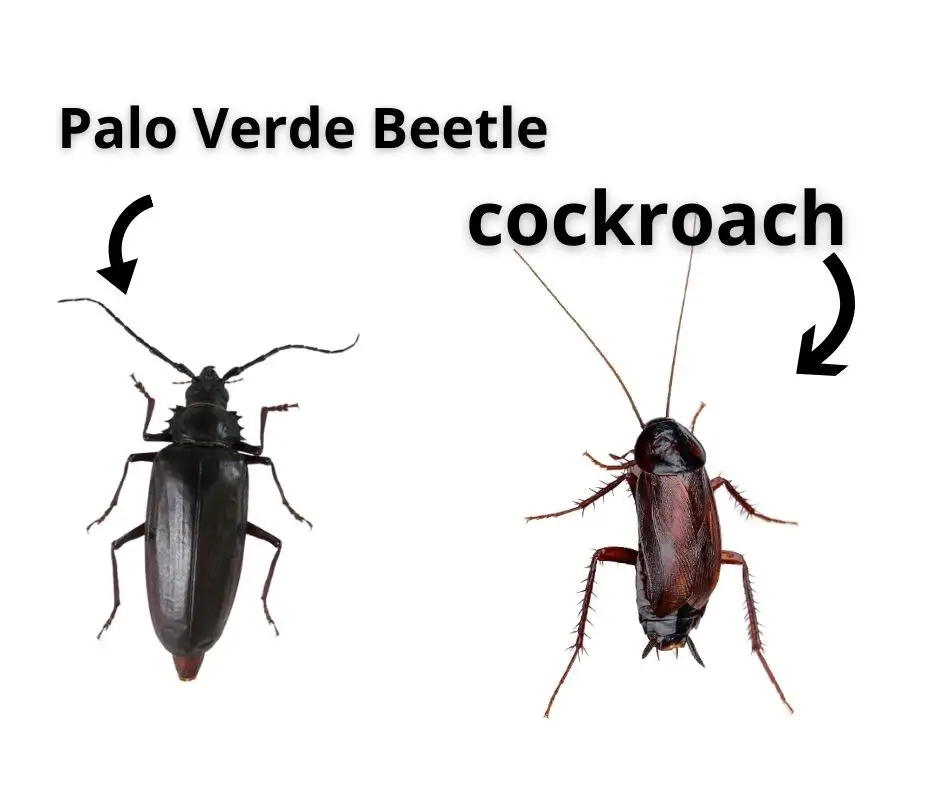
In the southwest America, a unique species of beetle thrives – the Palo Verde beetle. Its resemblance to roaches lies not only in its size and color but also in its overall characteristics. Measuring 0.5 to 3 inches in length, these beetles boast darker brown or black hues, elongated bodies, longer and thicker antennae, tougher shells compared to their roach counterparts, and the ability to take to the skies.
While they can be found outdoors, they are ill-suited for indoor living, with a preference for the great outdoors. The name ‘Palo Verde’ originates from their eggs hatching within the very trees that give them sustenance – palo verde trees. However, these beetles aren’t picky eaters and have also been known to inhabit olive trees and rose bushes. Young Palo Verde beetles will often make their homes in tree roots until they reach adulthood, marking a notable difference from roaches.
The stark contrast between the two species leaves little room for comparison.
Cockroach vs Wood-boring Beetle
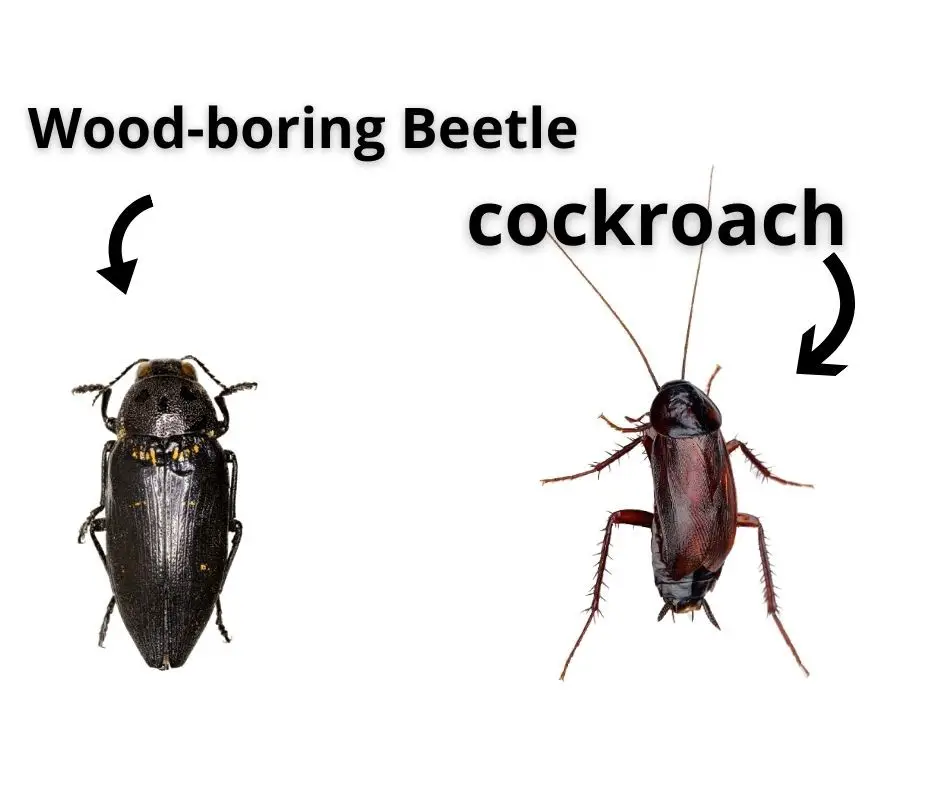
Initially, it’s easy to mistake a wood-boring beetle for a cockroach due to their shared physical characteristics. Both have similar coloration, antennae length, six legs, elongated oval-shaped bodies, and translucent wings with a reddish-brown hue. However, wood-boring beetles are distinct in their ability to bore into wood both outdoors and indoors if they gain entry to your home.
So, if you spot one emerging from a hole in your wood panels or walls, it’s likely a wood-boring beetle rather than a roach. A key difference is the size – wood-boring beetles are smaller than roaches, making them relatively easy to identify. In fact, they resemble smaller wasps compared to roaches. Additionally, their bodies feature distinctive black, white, and yellow markings, providing a clear visual identifier.
Conclusion
Roaches are often misunderstood pests, but they have a fascinating complexity to their biology and behavior. While they may appear simple at first glance, they possess unique characteristics that set them apart from other insects. One of the most striking aspects is their remarkable ability to mimic the appearance of other insects, with some species sporting similar colors and patterns. This adaptability is just one example of how roaches have evolved to thrive in a wide range of environments.
Their diverse diet and behavioral traits also contribute to their distinctiveness. By recognizing these characteristics, you’ll be better equipped to identify potential infestations and develop effective management strategies. Proper identification is crucial for successful roach control, and understanding the differences between roaches and other insects is essential for achieving this goal.
Frequently Asked Questions
To gain a deeper understanding of the fascinating world of cockroaches, let’s dive into some frequently asked questions that shed light on their intriguing structure, habits, and classification. By addressing common queries about these often-maligned insects, we can better appreciate their unique characteristics and roles within ecosystems.
Is a cockroach a beetle?
Let’s clear up a common misconception – roaches and beetles are not one and the same. While both insects belong to different families within the same order, they are distinct species with unique characteristics. Roaches fall under the family Blattodea, whereas beetles, mantids, and grasshoppers share a common order. Interestingly, some beetle varieties exhibit physical similarities to roaches in terms of color, shape, and size – think June bugs, wood-boring beetles, and ground beetles.
However, termites are actually more closely related to roaches than beetles, highlighting the importance of precise classification within the insect kingdom.
What do small roaches look like?
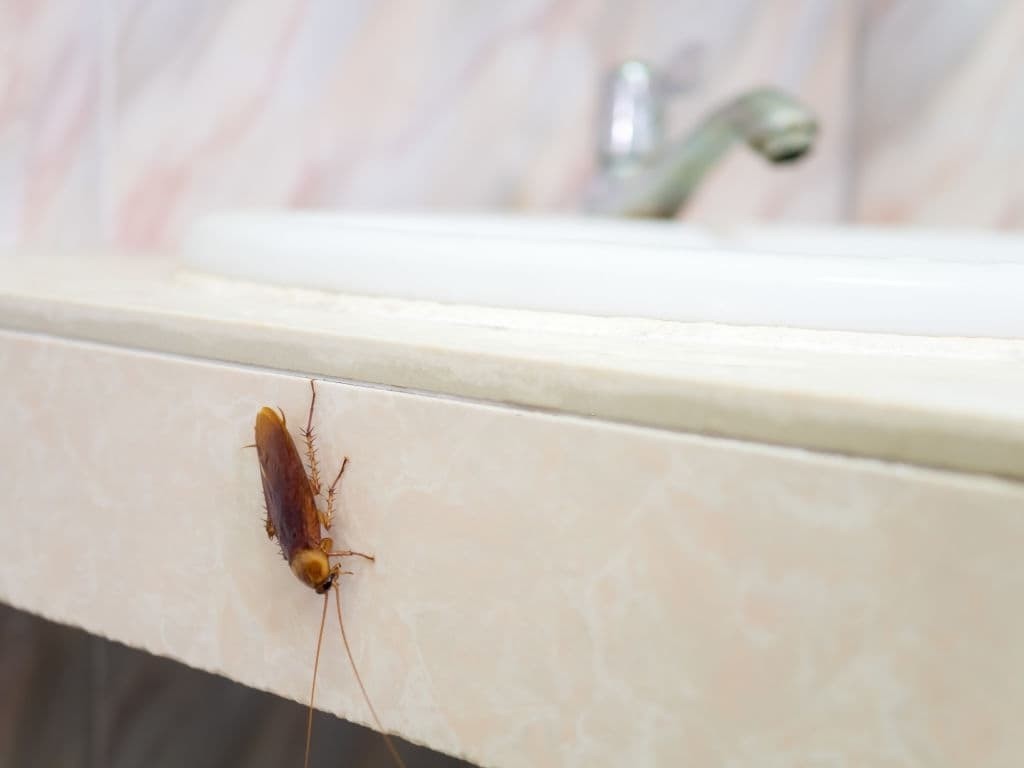
While small roaches may seem like a homogenous group, they actually exhibit distinct characteristics that set them apart from one another. Specifically, nymphs and smaller species like oriental and brown-banded roaches stand out due to their underdeveloped or absent wings. Furthermore, different roach types display varying shades of color, with American and German roaches boasting a reddish-brown hue, while smokybrown and brown-banded varieties range from pale to dark brown.
In contrast, oriental roaches are strikingly black. Measuring between 0.2 to 0.5 inches in length, these small roaches may be tiny, but they’re certainly not without unique features.
Is a roach an insect?
While often viewed negatively, roaches are indeed insects, specifically belonging to the order Blattodea. This group comprises an impressive 4,500 winged species or more. Notably, roaches are considered one of the most ancient winged insects, with their existence dating back some 320 million years ago. This predates not only human beings but also certain dinosaur and primitive species.
It’s essential to recognize that out of these vast numbers of roach species, a mere 30 are categorized as pests – a tiny fraction, accounting for just 1% of the total. Thus, it’s unfair to assume all roaches are problematic or cause infestations, as this blanket generalization does not accurately reflect their diversity.
Do roaches like light?

Roaches are predominantly nocturnal creatures that thrive in dark, humid environments. However, some species, such as smokey brown roaches, brown-banded roaches, and oriental roaches, exhibit an unusual affinity for light. This attraction to light is not necessarily a result of their aversion to it, but rather their tendency to perceive it as a signal that humans are present.
Roaches have an inherent fear response when they feel threatened or disturbed, which leads them to associate light with human activity. In reality, roaches are more timid than humans realize, and this fear drives their behavior. For instance, they typically only emerge from hiding four to five hours after the lights in a house are extinguished, as if they’re waiting for the coast to be clear before venturing out to search for sustenance.
When developing your roach identification or management plan, it’s essential to consider this nocturnal nature and the timing of their emergence.






